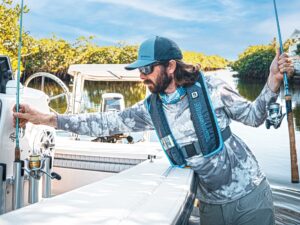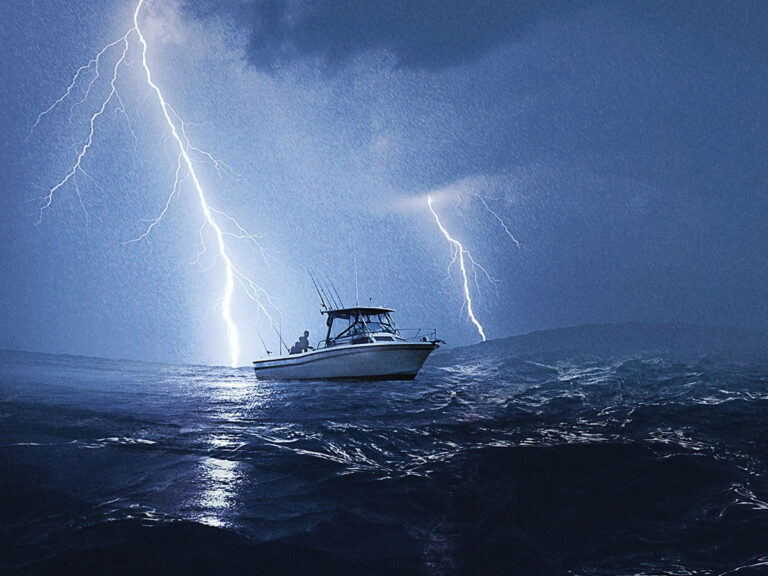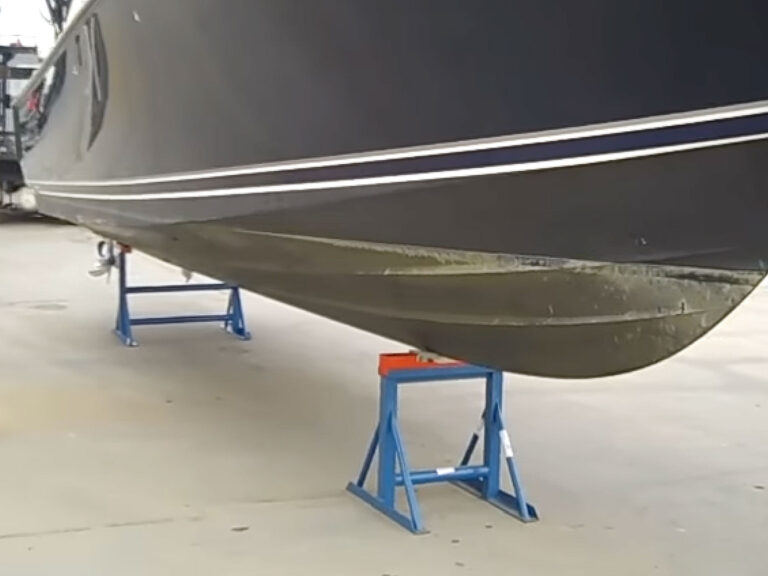If you own a boat long enough, you’ll find yourself contorting your body through cramped compartments and struggling to fish electrical wire through narrow, clogged chases. It is inevitable. So, if you want to delay the agony and you want that repair to last, allow me to give you a few wiring tips.
Fuse Block, Not Spade Connectors
Many boatbuilders add circuit breakers to their wiring systems, and take a power and ground from the battery to a spaded ground block and a spaded terminal panel. That’s ordinarily where your GPS, stereo and other devices will be powered using a female spade connector held onto the male spade by friction to complete the circuit. In most cases, circuit breakers protect the circuits, but the device manufacturer calls for an in-line fuse to protect the device. Many electronics call for a 5-amp fuse per device. A stereo amp can require a 30- to 60-amp fuse. If your boat has many devices going to that spaded panel, each with an in-line fuse, the panel becomes an indecipherable bird’s nest, and troubleshooting fuses is unnecessarily difficult.
There is a worse way to do it. You may see devices run directly to the battery. Or they are piggybacked onto a spaded terminal on a switch for another device. You can get away with a direct-to-battery connection if you only have one, providing you use a fuse, but it’s far less than ideal.
The ideal wiring arrangement replaces the spaded panel with a fuse block. It should have a protective cover and include labels for each terminal. Why? Spade connectors are easily dislodged by the boat’s movement or a gear in motion around the terminal. Worse, if the ground bar is similarly an uncovered spaded panel and they are too close together, some metal object could easily fall across the power and ground terminals, shorting and causing a fire.
Choosing a Fuse Block
Take stock of how many electrical devices you already have, and choose a fuse block that will accommodate them plus allow a few spare terminals. Compartment space available will also influence terminal size.
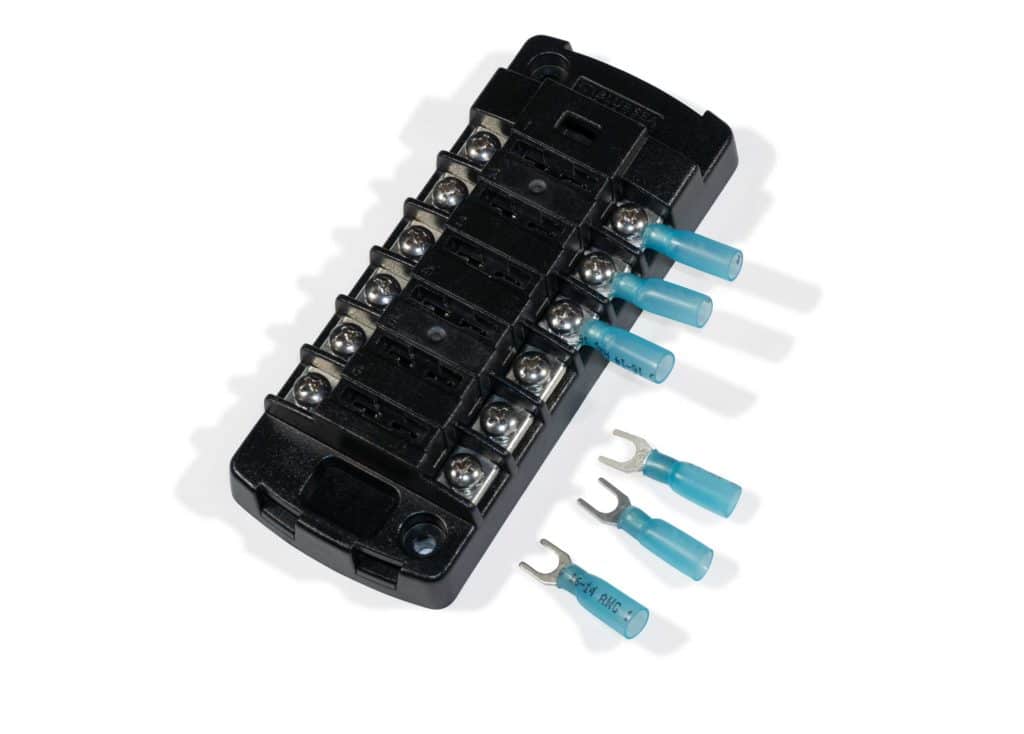
Blue Sea S 6-Circuit Blade Fuse Block
- $27; amazon.com
- 30 amps max
- 6 circuits
- 3 circuits can be switched
- Tinned copper contacts
- ATO/ATC fuses
- Blank labels
Blue Sea is one of the most respected names in marine electrical components. Use the three switched terminals for electronics to boot them up or off with a single toggle. Use the direct terminals for devices such as pumps and lights, or other functions.
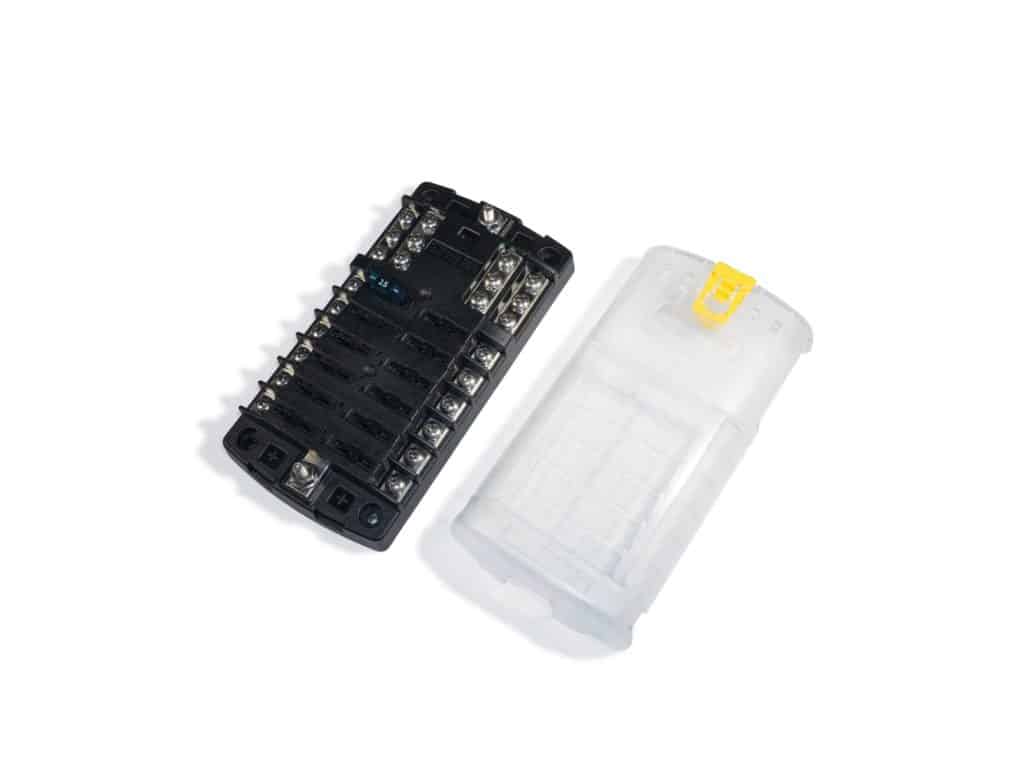
Blue Sea ST 12-Circuit Fuse Block and Ground Bar
- $17; amazon.com
- 30 amps max
- 12 circuits
- 12 grounds
- Positive and negative terminal posts
- Tinned copper contacts
- ATO/ATC fuses
- Dozens of printed labels
This panel combines positive and ground terminals for a direct connection to the battery, then 12 positive fused terminals and 12 grounds. This would be ideal for positioning in the helm to collect power lines that demand an in-line fuse in spite of circuit breakers.
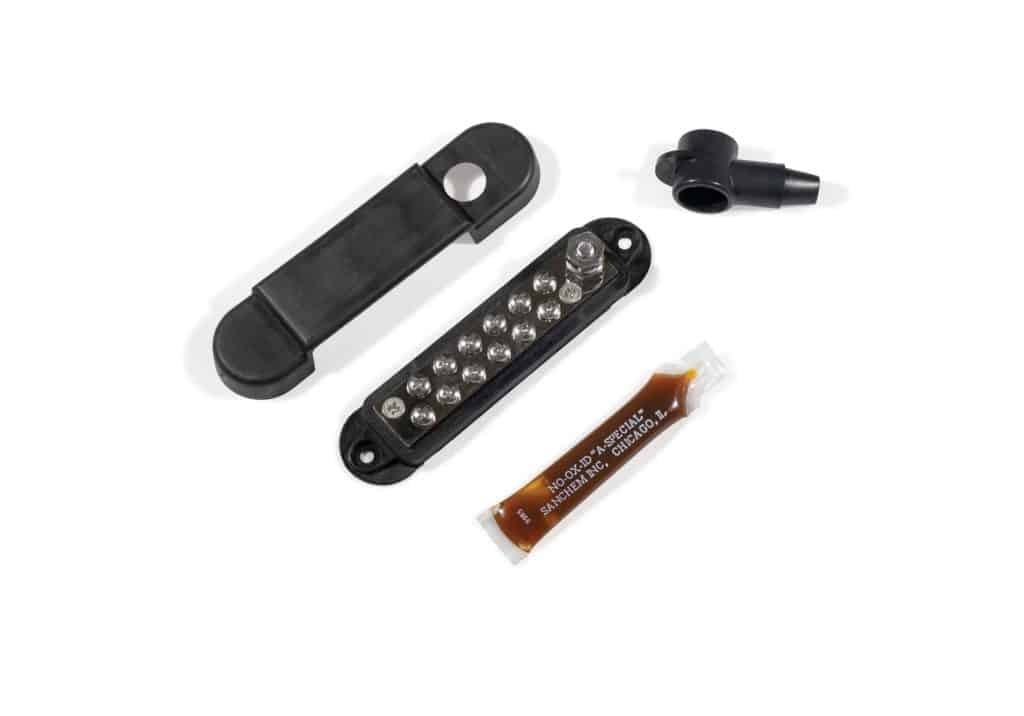
Bay Marine Supply Bus Bar
- $15; amazon.com
- 12 ground terminals
- Electrolytic protective grease
- Tinned copper terminals
Complete with a protective cover and insulated cover on the terminal, this ground bar should be located away from water intrusion and far enough from positive terminals that accidental shorting is unlikely. Electrolytic grease seals the terminals from corrosion, and dipping the connected terminal in the grease also seals the stranded wire from water intrusion.
Terminal Connectors
The American Boat and Yacht Council prefers ringed terminals. Flat-forked spaded terminals are acceptable, but the preferred forks feature bent tips that lessen the likelihood they’ll come off if the terminal screw loosens with time and vibration. I prefer forked terminals over rings because you can install them without removing the terminal screw completely, which risks dropping it in an inaccessible place.
Terminal Size
Terminals are sized to fit one wire, not quite snugly, allowing the wire’s strands to slip into the collar. Once it is crimped, it should take a team of Marines to pull it out. Red (sometimes pink) cover wires are from 22-18 AWG (American wire gauge—bigger numbers are for thinner wires), blue is 16-14 AWG, and yellow is 12-10 AWG. A combo sonar/chart plotter is likely to use a red terminal connector, a stereo amplifier may use a large (or larger) yellow one, and a device such as a bilge pump will likely need a blue 16-14 AWG diameter size.
Forked Spaded Terminal
Spaded flat terminals easily slide under the terminal screw head to be clamped in place. Unfortunately, if the screw loosens even slightly, it can slip off. Terminals that aren’t shrink-protected (bottom right) should be reserved for auto use.
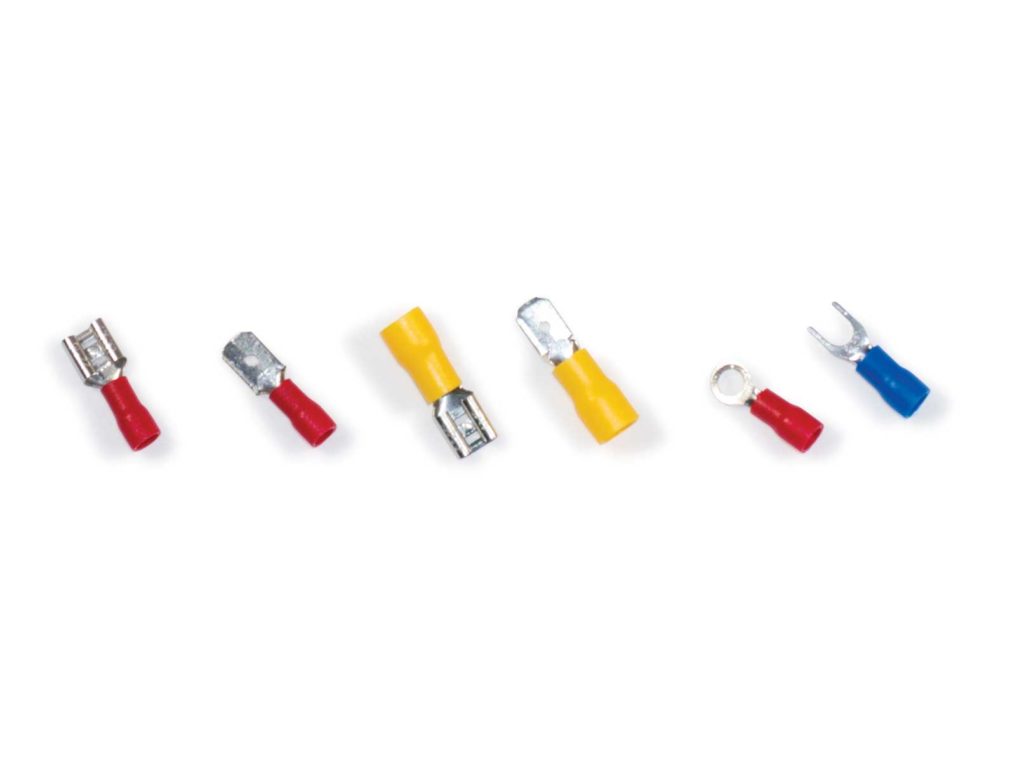
Flanged-Fork Spaded Terminals
Bent tips on the flanged or captive fork won’t slip off a loose terminal as easily. This is a dubious benefit because a loose connection can spark repeatedly, but if the terminal pulls completely away, the circuit is fully interrupted. The problem is if it falls against another terminal.
Ringed Terminals
However, the ringed terminal above is acceptable to ABYC standards, if it is covered in shrink tubing. A terminal with a heat-shrink collar is preferred. Hit them with a heat gun, and they will shrink down tight to the wire, protecting the connection from water.
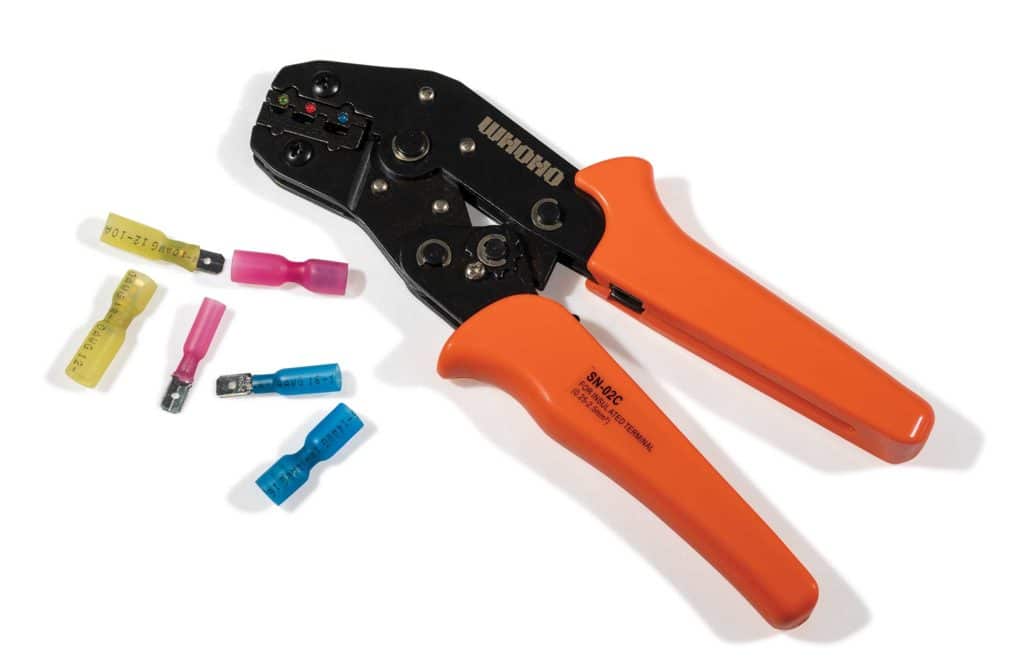
Crimpers
You can get one of those wire-stripping/crimping combo tools if you have a strong grip and tons of patience. But by using a two-handed grip, I have failed to make a secure crimp all too frequently, wasting a connector. Use ratcheted crimpers like these to get a tight crimp. The ABYC prefers using brand-matched crimpers and terminals if possible. Slight variations in competitive terminals may create loose connections.
Read Next: Locating Ground Faults (“Current Leaks”) and Short Circuits
Disconnect Terminals
These are male and female, and are ideally used on devices that may be frequently removed or replaced on the boat, such as bilge-pump cartridges.
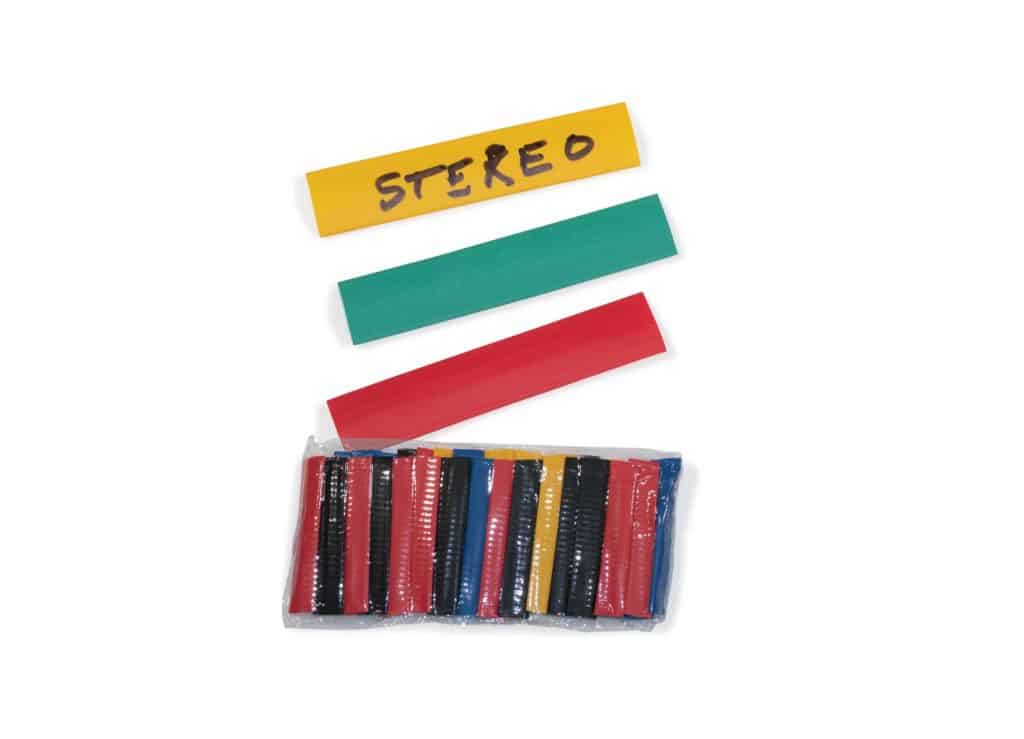
Shrink Tubing
Shrink tubing can be useful for insulating, moisture protection and labeling wire ends. ABYC rules demand all power and ground lines be labeled as to the mechanism they serve within 6 inches of their terminus. You can write on shrink tubing with a fine-point indelible marker, then slip it over the wire and joined terminal, and shrink it in place. This assortment covers many wire types, from fine solid-state internal wires to battery terminals.

